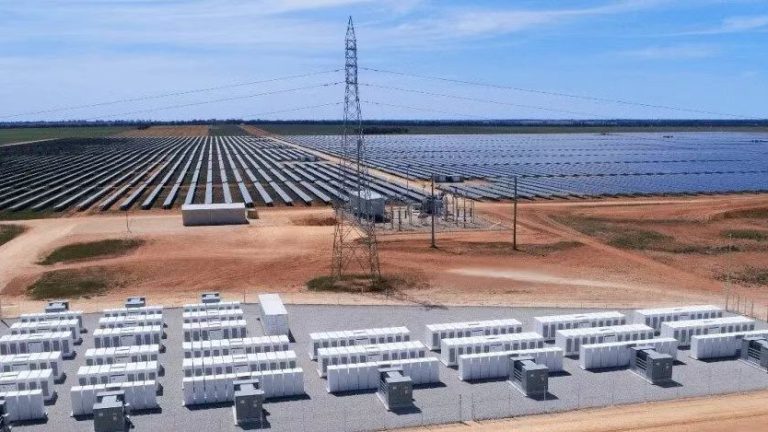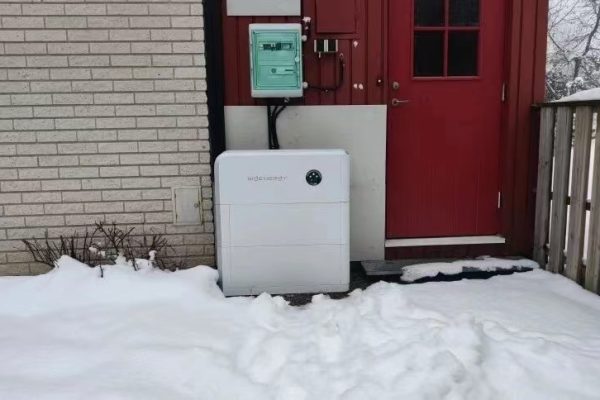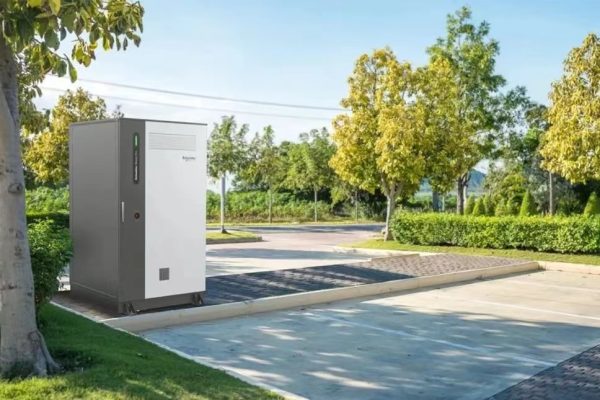How Energy Storage Reduces Demand Charges and Improves Power Stability for SMEs
Electricity costs are a major operating expense for small and medium-sized factories. Unlike residential users, factories often face demand-based tariffs, where utilities charge not only for total energy consumption (kWh) but also for the maximum power drawn (kW) during billing periods.
This “peak demand charge” can account for 30–50% of a factory’s total electricity bill, especially if production loads fluctuate or multiple machines start simultaneously.
To solve this, many small factories are now turning to Energy Storage Systems (ESS) for peak shaving — a strategy that uses stored energy to flatten the power load curve and reduce demand spikes.
This article explains how ESS works for peak shaving, its technical setup, sizing methods, ROI, and practical benefits for small industrial facilities.
1. Understanding Peak Shaving
What Is Peak Shaving?
Peak shaving means reducing the highest power demand that occurs during a billing cycle.
For example:
- A small metal processing plant draws 180 kW at peak hours.
- If the demand limit is reduced to 120 kW using a 60 kW battery system, demand charges drop significantly.
Utilities typically bill based on the highest 15-minute average demand each month. By discharging the battery during those peaks, the factory avoids higher tariff rates.
Key Benefits:
✅ Lower monthly demand charges
✅ Stabilized power flow and voltage
✅ Reduced grid dependency during high-load events
✅ Improved machine performance and safety
2. Why Small Factories Need ESS
Unlike large manufacturing plants, small factories often:
- Lack dedicated energy management teams.
- Have unstable load patterns due to intermittent machine use.
- Suffer from sudden current surges when motors or compressors start.
- Operate in regions with high demand charges or unstable grids.
For such users, a compact ESS (50–500 kWh range) provides immediate financial and operational benefits with manageable investment.
3. How ESS Works for Peak Shaving
The concept is simple:
- During low-load periods, the battery charges from the grid (or PV if available).
- During peak demand, the ESS discharges to support the load, keeping grid power below a set threshold.
Components Involved
- Battery System (BESS): Stores energy (LFP or NMC chemistry).
- Power Conversion System (PCS): Manages charge/discharge power.
- Energy Management System (EMS): Monitors grid load and triggers discharge.
- Smart Meter or CT Sensors: Measure real-time demand.
The EMS ensures the system only discharges when load approaches the pre-defined demand limit.
4. System Sizing for Small Factories
Proper system sizing ensures cost-effective peak shaving.
Step 1: Analyze Load Profile
Use 15-min interval demand data over 1–3 months.
Identify:
- Peak power (kW)
- Peak duration (minutes)
- Frequency of peaks
Step 2: Estimate Required Power (kW)
This defines the PCS rating — typically 50–70% of the factory’s peak demand.
Example:
- Peak demand: 180 kW
- Target limit: 120 kW
- Required PCS power: 60 kW
Step 3: Estimate Energy (kWh)
If each peak lasts 30 minutes:
60 kW × 0.5 h = 30 kWh per event
If peaks occur 3 times/day, plan for 90 kWh usable capacity with 20% reserve margin:
→ Total battery size ≈ 120 kWh
5. Typical Configuration Example
| Component | Specification | Description |
|---|---|---|
| Battery | 120 kWh LFP | Modular cabinet or rack system |
| PCS | 60 kW bidirectional inverter | Supports grid and load |
| EMS | Industrial control box | Peak detection and logic control |
| CT sensors | 3-phase, 400A | Real-time monitoring |
| Communication | Modbus TCP/IP | Links to factory SCADA or EMS |
Operation:
- Battery charges at night (off-peak tariff).
- Discharges when load exceeds 120 kW.
- Automatic stop once peak event ends.
6. Integration with Solar PV
Many factories already have rooftop PV systems. ESS adds intelligence by storing excess solar energy and discharging during grid peaks.
PV + ESS Peak Shaving Mode:
- PV generates daytime energy.
- ESS charges when PV output exceeds demand.
- ESS discharges when factory load rises or PV generation drops.
This maximizes self-consumption and reduces both energy and demand costs.
☀️ In regions with high solar potential, PV+ESS can cut factory electricity bills by 40–60%.
7. Choosing the Right Battery Technology
For small factories, Lithium Iron Phosphate (LFP) is the preferred chemistry.
| Feature | LFP | NMC |
|---|---|---|
| Safety | Excellent | Good |
| Cycle life | 6,000–10,000 | 3,000–5,000 |
| Energy density | Moderate | High |
| Cost | Competitive | Slightly higher |
| Thermal stability | Strong | Moderate |
✅ Recommendation: Choose LFP for stationary applications — longer lifespan and safer thermal behavior for industrial environments.
8. EMS Control Strategies
The EMS (Energy Management System) is the “brain” of the setup.
Common EMS Modes:
- Demand limit control: Discharge battery when load > preset value.
- Time-of-use optimization: Charge during low tariffs, discharge during peak hours.
- PV coordination: Manage battery use according to solar generation.
- Grid support: Optional mode for power factor correction or reactive compensation.
A well-programmed EMS can optimize usage and extend battery life by avoiding unnecessary cycles.
9. ROI and Cost Analysis
The economics of peak shaving depend on local tariff structures.
Example Calculation
| Parameter | Value |
|---|---|
| Factory peak demand | 180 kW |
| Target limit | 120 kW |
| Demand charge | $10 per kW per month |
| Reduction | 60 kW |
| Savings | $600/month |
If ESS cost is $45,000 for 120 kWh system:
→ Payback ≈ 6–7 years (without PV)
→ 4–5 years (with PV or higher demand tariffs)
💰 Bonus: ESS also provides backup during outages — increasing the overall value.
10. Additional Benefits Beyond Cost Savings
- Voltage stability: Reduces flicker when large motors start.
- Equipment protection: Avoids overcurrent trips.
- Grid independence: Supports partial off-grid operation.
- Power quality improvement: Reduces harmonics and flicker.
- Sustainability: Enables integration with solar or EV chargers.
11. Maintenance and Operation
ESS systems for small factories are low-maintenance, but require periodic checks:
| Frequency | Task |
|---|---|
| Monthly | Check SOC trend and discharge logs |
| Quarterly | Inspect cables, filters, and BMS alarms |
| Annually | Firmware updates and capacity test |
Remote EMS monitoring allows service teams to perform diagnostics and updates online.
12. Safety Considerations
Safety in industrial environments is critical. Ensure:
- Battery enclosure: IP54 or IP65-rated cabinet
- Fire suppression: Aerosol or clean-agent system inside cabinet
- Thermal management: Forced air or liquid cooling if needed
- Certification: IEC 62619, UN38.3, CE, UL1973
Always follow local electrical
regulations for grounding, isolation, and emergency disconnects.
⚠️ Tip: For small factories with tight spaces, use pre-certified all-in-one ESS cabinets — these simplify installation and ensure compliance.
13. Case Example: 100 kW Workshop in Southeast Asia
Background:
A precision machining workshop faced high peak charges due to simultaneous CNC machine start-ups.
Challenge:
- Peak demand: 180 kW
- Average demand: 90 kW
- High monthly demand charges from utility
Solution:
- Installed 100 kW / 200 kWh LFP-based ESS
- Set EMS control limit at 120 kW
- Charged battery from grid at night and solar during daytime
Result:
- Peak demand cut by 33%
- Annual savings ≈ $8,000
- Improved voltage stability; no unplanned machine shutdowns
14. Choosing the Right System Partner
For small factories new to ESS, working with a turnkey solution provider simplifies deployment.
When evaluating vendors, look for:
- Proven industrial ESS case studies
- Modular capacity options (50–500 kWh)
- Integrated EMS with remote monitoring
- Local technical support
- Clear ROI models and warranty terms
🔧 Tip: Ask suppliers for load simulation reports before purchasing — it ensures the system truly matches your peak-shaving goals.
15. Future Trends
As utilities introduce time-of-use pricing and carbon reduction policies, small factories will increasingly use ESS for:
- Dynamic load shifting
- Renewable energy integration
- EV charging support
- Grid ancillary services (V2G, frequency regulation)
Battery prices continue to fall by 5–10% per year, making peak shaving accessible even for facilities under 100 kW.
For small factories, Energy Storage Systems (ESS) are more than just backup power — they’re a smart investment in energy cost control and production stability.
By shaving peak demand, a well-sized ESS can:
✅ Cut electricity bills by 20–40%
✅ Protect sensitive machinery from power fluctuations
✅ Extend equipment lifespan
✅ Enable smoother operation with renewable sources
As global industries move toward smarter, cleaner, and more efficient energy use, adopting ESS for peak shaving is one of the most practical and financially sound steps small manufacturers can take today.









